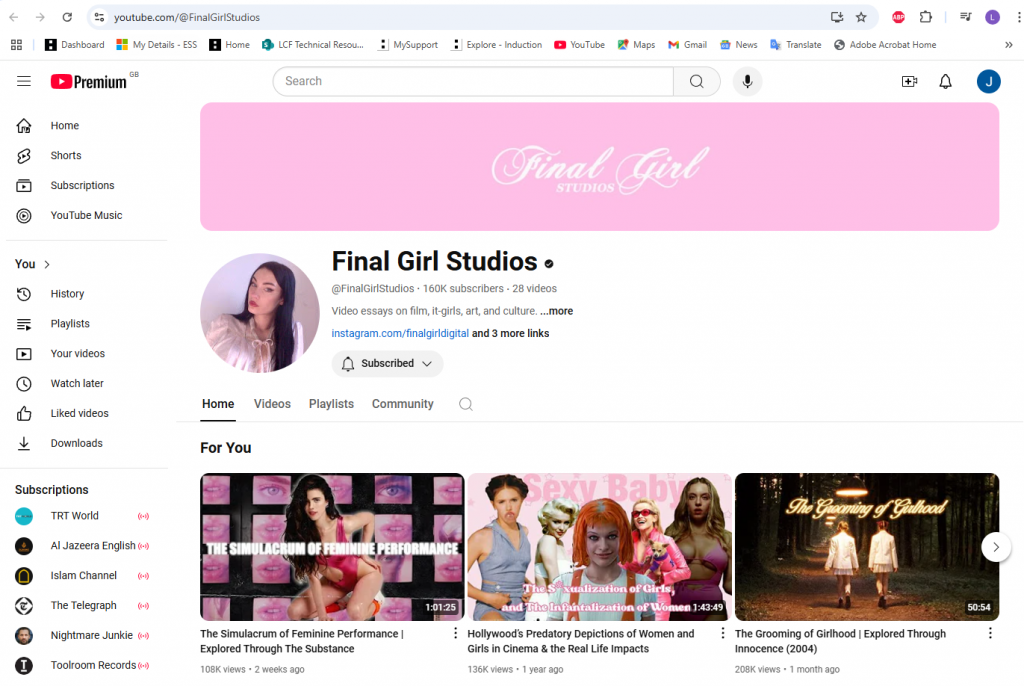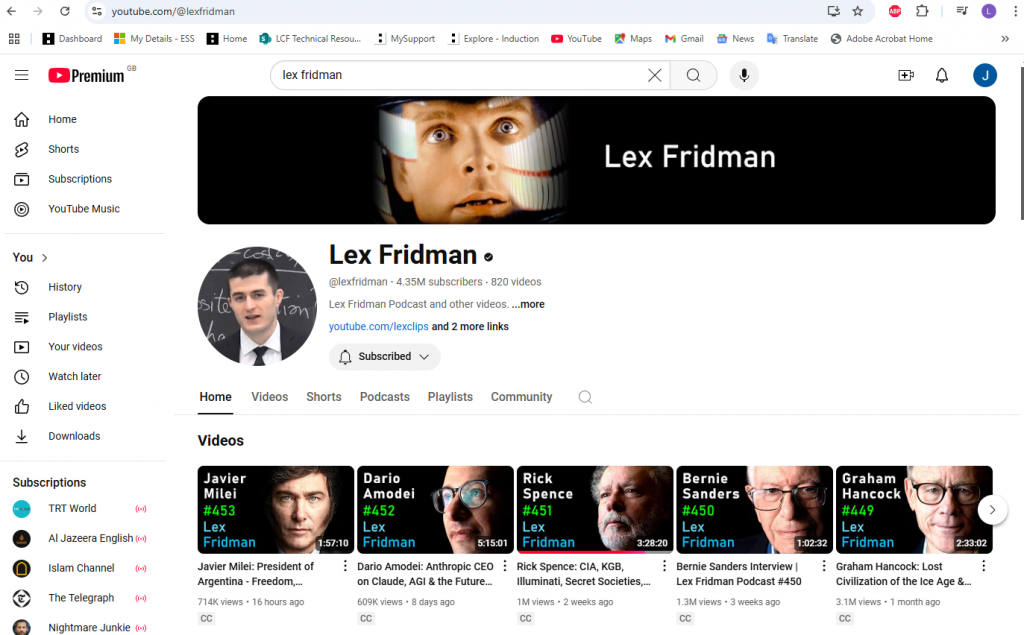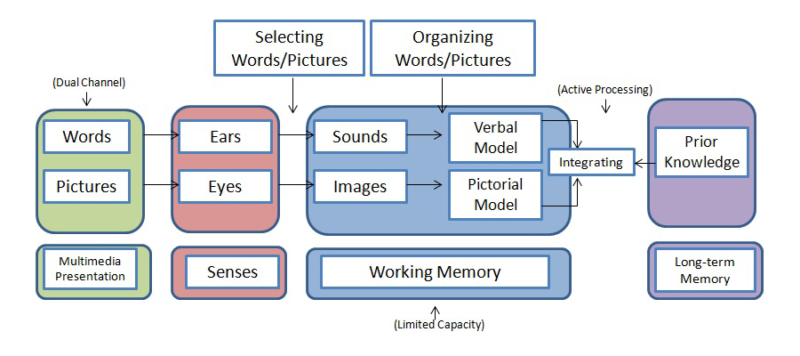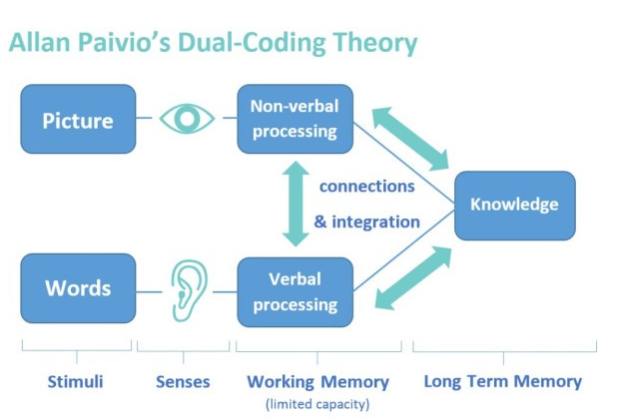I think by now, it would be safe to say I am entirely passionate about Video Essays, and that’s because I have been noticing a cultural shift within the UAL student community as well as my ethnic/religious community. When it comes to knowledge gathering, people are opting for watching and listening to content on YouTube rather than picking up a book/long form article. To me this represents technological acculturation in the way we consume information, similar to the way we consume social media. Therefore we should be considering the video essay as a valid form of referencing and as a pedagogy.
Video essays have gained traction as a pedagogical tool, specifically in recent years, and many youtube channels show that they can indeed be well-researched and effective for learning, for instance the channels: Philosophy tube, Final Girl Studios and Lex Fridman really lean towards the online space transforming into an intellectual space.


However, research on video essays as educational tools points to several strengths as well as some challenges to consider:
In modern education, merging visuals, sound, and text, I believe, enriches student engagement and comprehension in an accessible way. This approach is ideal for diverse learning styles—visual, auditory, and kinaesthetic—enhancing accessibility for digital-native learners (Mayer, 2009).

Using “dual coding” principles, video essays combine visual and verbal information, significantly aiding cognitive retention, especially in complex subjects such as literature and history (Paivio, 1991).

Video essays foster critical thinking by presenting structured arguments that encourage analytical skills (Burmark, 2002).This format is also adaptable to current events and culturally relevant content, making it an excellent fit for various educational settings.
Moreover, video essays work well in flipped classroom models, where students can view material at home as an asynchronous resource, then engage in meaningful in-class discussions (Bergmann & Sams, 2012). For both students and teachers, video essays offer a dynamic, accessible medium for modern learning.
Some video essays lack in depth research or references, so educators should guide students in evaluating these sources critically, developing their media literacy skills. But then there would be the risk of cognitive overload. I will segment the content, allowing for pauses, and summarising main points to manage this (Mayer, 2009).
Lastly, digital access varies widely. I am no stranger to issues with internet connectivity and device availability, but generally speaking I ensure equitable access to video resources from different parts of UAL.
I have listed below what I find to be the most crucial takeaways for me going forward.
- Supplement, Don’t Replace: Video essays are most effective when they complement, rather than replace, traditional readings and other resources.
- Promote Critical Evaluation: Encouraging students to assess the credibility of video essays can enhance media literacy.
- Encourage Creation: Assigning students to create their own video essays allows them to engage more deeply with the content through research and synthesis.
- Blend with Active Learning: Combining video essays with discussions, assignments, or reflective activities can reinforce learning and encourage deeper engagement.
I want to add that Video Essays can also be a better, more environmentally friendly solution to the traditional means of creating a film which would require many moving parts, including crew, crew travel, and location travel to the parts of the world of which the film is based on (for me that would be the Democratic Republic of Congo).
(Word count 559)
References
- Berk, R.A., 2009. Multimedia teaching with video clips: TV, movies, YouTube, and mtvU in the college classroom. International Journal of Technology in Teaching & Learning, 5(1), pp.1-21.
- Bergmann, J., & Sams, A., 2012. Flip your classroom: Reach every student in every class every day. International Society for Technology in Education.
- Burmark, L., 2002. Visual literacy: Learn to see, see to learn. ASCD.
- Mayer, R.E., 2009. Multimedia Learning. 2nd ed. Cambridge University Press.
- Moreno, R., & Mayer, R.E., 2000. A coherence effect in multimedia learning: The case for minimizing irrelevant sounds in the design of multimedia instructional messages. Journal of Educational Psychology, 92(1), pp.117-125.
- Paivio, A., 1991. Dual coding theory: Retrospect and current status. Canadian Journal of Psychology, 45(3), pp.255-287.